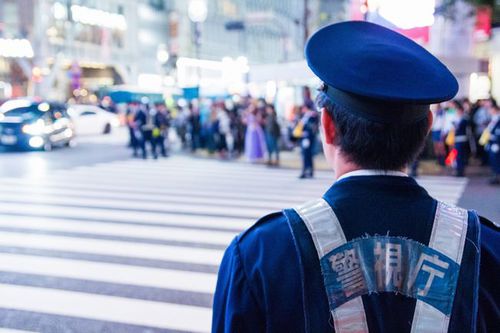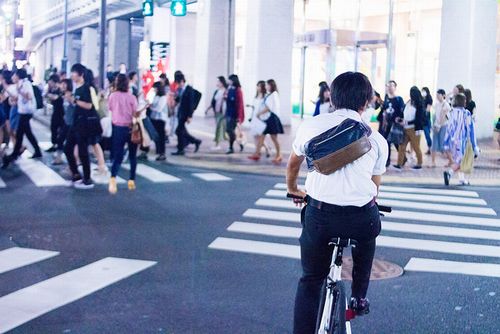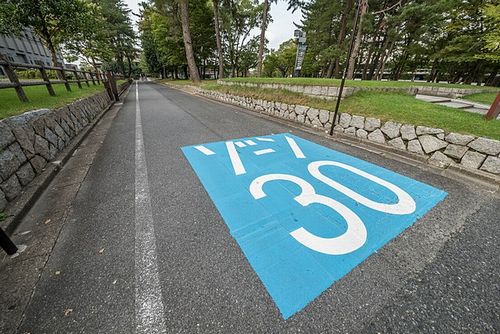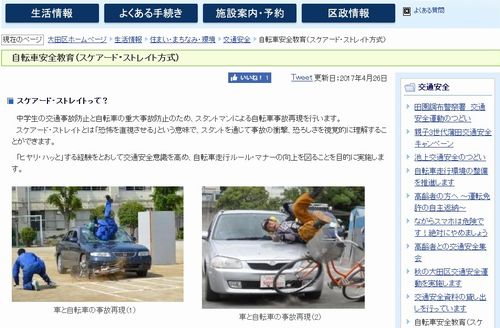September 25, 2017
Japan's Road Traffic Deaths Drop to 1/4 of Peak Level
Keywords: Newsletter Others
JFS Newsletter No.180 (August 2017)

Image by Dick Thomas Johnson Some Rights Reserved.
According to data published by the World Health Organization (WHO) in 2015, there were about 1.25 million road traffic deaths globally in 2013, nearly the same level as the 1.24 million in 2010. The WHO has been calling on nations to take concrete actions, insisting that safety measures can steadily decrease the number of fatalities.
The National Police Agency of Japan (NPA) reported that traffic accident fatalities in 2016 dropped by 213 from the previous year to 3,904. The figure is one fourth of the peak level in 1970, and the first time below 4,000 in the 67 years since 1949. The number of fatalities has decreased by about 40% during the past decade. In this issue of the JFS Newsletter, we introduce efforts that have been taken in Japan to prevent traffic accidents.
Trends and current status of traffic accidents in Japan
In Japan, the number of motor vehicles owned and people with driverfs licenses started to increase in the 1950s, and nowadays, cars are an essential form of mobility in our daily lives. Tracking the increased dependency on cars, the number of annual traffic accident fatalities increased significantly and reached 16,765 in 1970.
After that, traffic safety measures were enhanced, including improvements in traffic safety infrastructure. As a result, fatalities dropped temporarily to half of the 1970 number, reaching 8,466 in 1979. In 1980s, however, it increased again, exceeding 10,000 for eight consecutive years from 1988.
Then, the number started to decrease again, remaining below 10,000 since 1996. According to the NPA's White Paper on Police, which compiles statistics on the status of traffic accidents status, from 2005 to 2015 there were 4,117 traffic fatalities in 2015, a decrease of about 40% from 2005.
The breakdown by age shows that traffic fatalities of people aged 65 and older decreased by only 24%. People aged 65 and older accounted for 42.6% of traffic fatalities in 2005 and 54.6% in 2015, an increase of 12 percentage points.
The number of fatalities per 100,000 people decreased by more than 40% in 2015 from 2005 in all age groups, including people aged 65 and older. The death toll of people aged 65 and older remains at more than twice the level for all age groups. In 2015, the number of fatalities per 100,000 was 3.2 for all age groups and 6.8 for people aged 65 and older. The figure has been decreasing as a whole, but traffic accidents involving seniors are a serious issue in Japan, where the further aging of society is anticipated.
Traffic Accident Prevention Measures
One of the characteristics of Japanese traffic accidents, compared with the United States and European countries, is that the percentages of fatalities of pedestrians and cyclists are remarkably high. Of all the victims who died within 30 days after the accident, the percentage of fatalities from pedestrian or bicycle accidents was 19.4% in France (2014), 31.3% in the UK (2014), and 16.7% in the US (2013), while in Japan it was 52.9% (2015).

Image by Dick Thomas Johnson Some Rights Reserved.
Various measures have been taken to reduce the number of pedestrian and bicycle accidents. With their success, 2016 traffic accident fatalities of pedestrians decreased by 12%, and cyclists by 14%, while the numbers for car drivers or motorcyclists were almost flat. According to the NPA, the comprehensive measures it has taken so far are a major factor in the decrease of pedestrian and bicycle accidents. So, let's have a look at what kinds of measures have been taken.
1. Measures to Reduce Pedestrian Accidents
Two measures have been taken to ensure safer mobility for pedestrians and others by improving the road traffic environment.
1-1. Zone 30
Japan has been promoting something called "Zone 30" to ensure safer mobility for pedestrians and others on residential streets in urban areas. Zone 30 is an area where the maximum speed is limited at 30 kilometers per hour and side strips are established or widened. Depending on actual conditions of the road traffic in these zones, traffic regulations such as a closure to vehicle traffic are implemented, or speed bumps are installed to force drivers reduce speeds. Measures like these are being used to control speeds and calm or prevent through-traffic in the Zones.

Zone 30 : Photo by Jin Kemoole Some Rights Reserved.
1-2. Barrier-free Traffic Signal Equipment
For safer street crossings for the elderly and the mobility-challenged, the installment of barrier-free traffic lights and signs is being promoted.
"Barrier-free" traffic signals include various types of equipment being installed, such as audio signaling to indicate what is being displayed, traffic lights that show pedestrians the elapsed time, waiting time or remaining time to proceed, and pedestrian/vehicle separate traffic lights to prevent traffic accidents by separating the time for pedestrians and bicycles versus the time for vehicles.
Regarding traffic signs, more easily viewable and understandable road indicators and signage are being installed with features such as bigger signs and the use of materials that better reflect vehicle headlights. Also, tactile paving is being used on pedestrian street crossings to increase safety and convenience for the visually-impaired.
2. Measures to Prevent Bicycle Accidents
In about 80 percent of bicycle accident fatalities, the cyclist broke some traffic regulation. In many cases the cyclist had failed to confirm the safety of the situation or did not handle the bicycle properly, so it is crucial to have proper and orderly bicycle traffic. For this, four measures are being implemented, as described below.
2-1. Improving the traffic environment for bicycles
Improvements are being made to create an environment where pedestrians, bicycles and automobiles can co-exist, by ensuring traffic safety for cyclists when they ride on roadways and pedestrians when they are on sidewalks. In addition, spaces are being developed exclusively for bicycles, such as bicycle lanes and paths, and there is a review of specific places where traffic regulations allow bicycles on sidewalks. In all of this, an effort is being made to ensure safety for both cyclists and pedestrians.
2-2. Raising cyclist awareness of traffic rules
Awareness programs try to familiarize cyclists of all age groups with traffic rules for bicycles, including rules that bicycles should basically travel on roadways; bicycles should keep to the left side of the street; and pedestrians have the priority on sidewalks.
In recent years there have been many cases in which the cyclist caused the accident. Awareness programs are thus emphasizing the penalties for not following the rules, the dangers of traffic accidents, the seriousness of responsibility when one causes a traffic accident, and the need for cyclists to have third party liability insurance. In addition, to reduce damage and injury programs promote helmet use for cyclists, and seatbelts use for young children in bicycle child seats.
2-3. Bicycle safety education
Programs also promote bicycle safety education for children and students. They try to provide good educational content, including using stuntmen to replicate traffic accidents, holding participative, hands-on and practical bicycle classes using bicycle-simulators, and so on.

Bicycle safety education from Ota City website
For high-risk bicycle riders, training sessions are provided. Riders who repeatedly commit a certain traffic violation are asked to take educational classes to make them realize the importance of safe cycling, in order to prevent traffic dangers.
2-4. Traffic guidance for cyclists
Based on occurrences of traffic accidents between bicycles and pedestrians, as well as complaints and requests of local residents, 1,791 priority areas and roads were designated nationwide as special zones for bicycle traffic guidance and education as of December 31, 2015. Warnings are issued when cyclists ride without a light, ride double, ignore red signals, and fail to stop. For egregious and dangerous traffic violations, arrests and other rigorous measures are taken.
Future challenges
In 2016, 54.8 percent of all traffic deaths were of people aged 65 and older. This ratio is the highest since statistics began. As mentioned above, the need to reduce traffic accident mortalities among seniors will continue to be a major issue as the ratio of Japan's elderly population increases in the coming years.
Despite the absolute statistics , the number of deaths per 100,000 of the population is dropping at the same rate in all age groups and for people over 65, so we know that the current measures are indeed being effective for people over 65. We hope that the implementation of measures focused on reducing the number of accidents involving the elderly will continue to reduce the accident mortality rate for seniors.
Written by Nobuhiro Tanabe
Related
"JFS Newsletter"
- 'Good Companies in Japan' (Article No.4): 'Eightfold Satisfaction' Management for Everyone's Happiness
- "Nai-Mono-Wa-Nai": Ama Town's Concept of Sufficiency and Message to the World
- 'Yumekaze' Wind Turbine Project Connects Metro Consumers and Regional Producers: Seikatsu Club Consumers' Co-operative
- Shaping Japan's Energy toward 2050 Participating in the Round Table for Studying Energy Situations
- 'Good Companies in Japan' (Article No.3): Seeking Ways to Develop Societal Contribution along with Core Businesses


